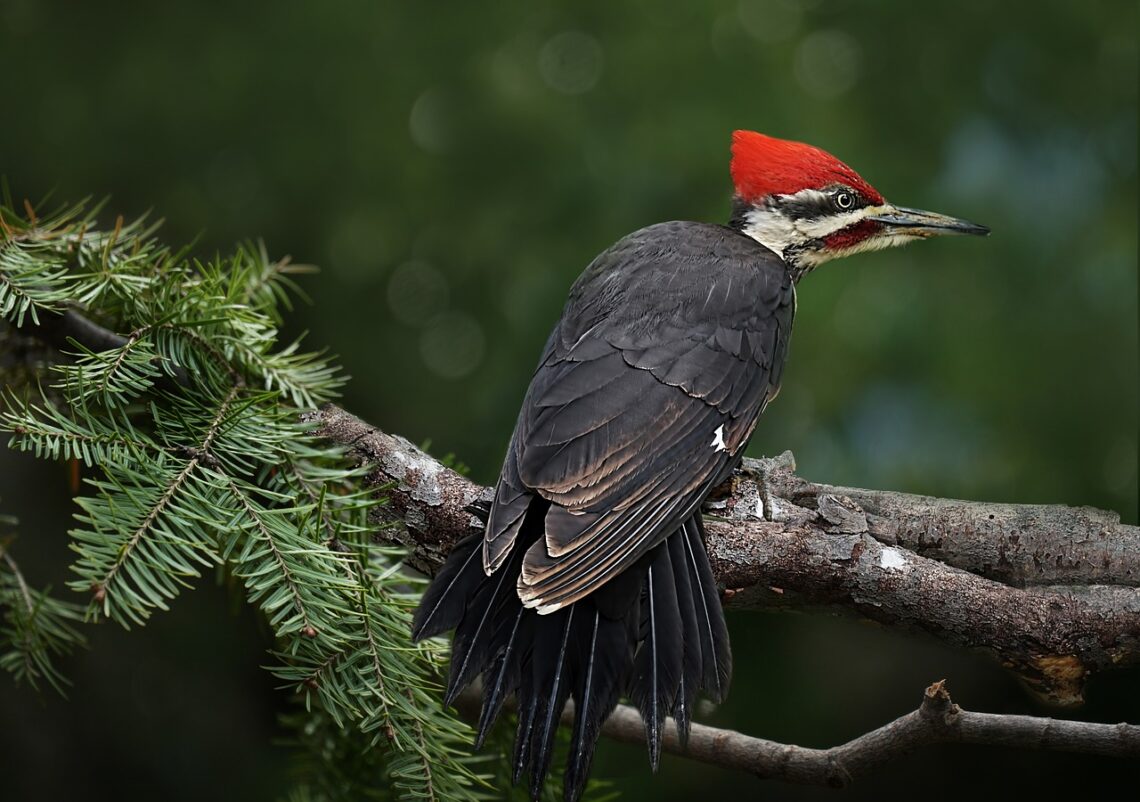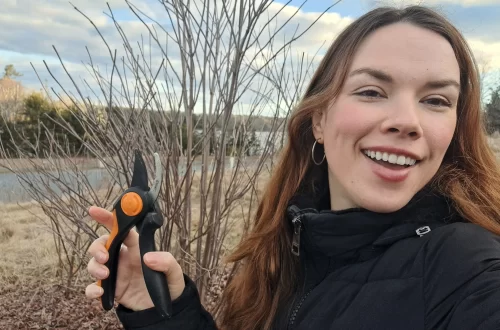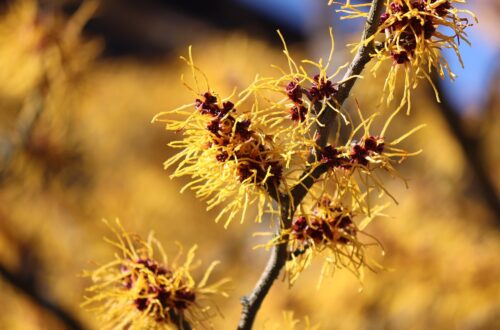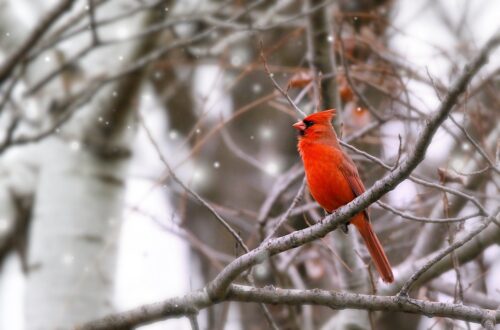The right food, water and shelter resources are essential if you want to attract woodpeckers!
North America has 23 distinct species of native woodpeckers, including massive pileated woodpeckers and pint-sized, downy woodpeckers. Woodpeckers are well-known for their patterned plumage and bug-eating habits, and they have big personalities that make them especially fun to watch at birdfeeders. If you want to make your yard more biodiverse and attract woodpeckers to your garden, this guide will teach you how to transform your yard into a woodpecker-safe habitat!
Affiliate disclosure: As an Amazon Associate, I may earn commissions from qualifying purchases.
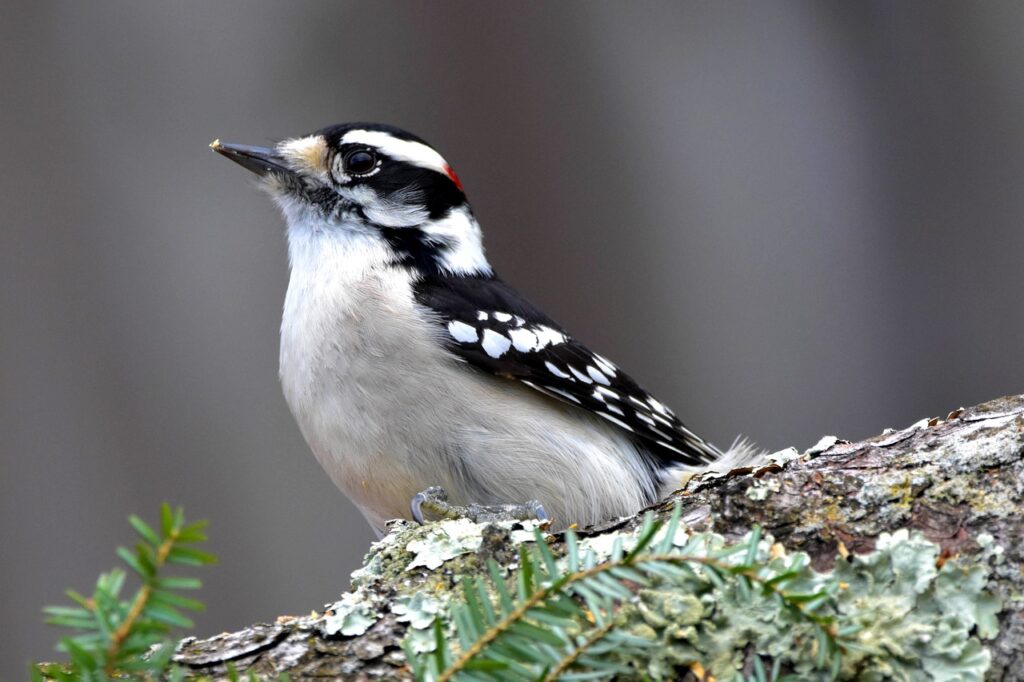
What Types of Woodpeckers Live in North America?
Globally, there are about 240 varieties of woodpeckers, which belong to the family Picidae. However, the most common North American woodpecker species you may see in suburban areas include the:
- Pileated woodpecker
- Red-headed woodpecker
- Downy woodpecker
- Red-bellied woodpecker
- Hairy woodpecker
- Ladder-backed woodpecker
- Yellow-bellied sapsucker
- Northern flicker woodpecker
Woodpeckers vary significantly in size, shape and coloration, but most woodpeckers have a few key features in common: they drill holes into wood with their beaks while hunting for insects and they use long, specialized tongues to fish insects out of their burrows!
The woodpecker tongue is a fascinating thing and I could write a lot about it. But here are a few fun facts to know:
- Many woodpecker species have tongues that are about 4 times the length of their beaks and those tongues retract into the woodpecker’s head– much like measuring tape!
- Woodpecker tongues are very sensitive and they function a lot like probes, allowing the bird to detect insects deep in wood.
Source: Alaska Department of Fish and Game
- Not only are woodpecker tongues covered in sticky salvia, but they also have a barbed tip, which can be used like a mini harpoon to capture unlucky insects!
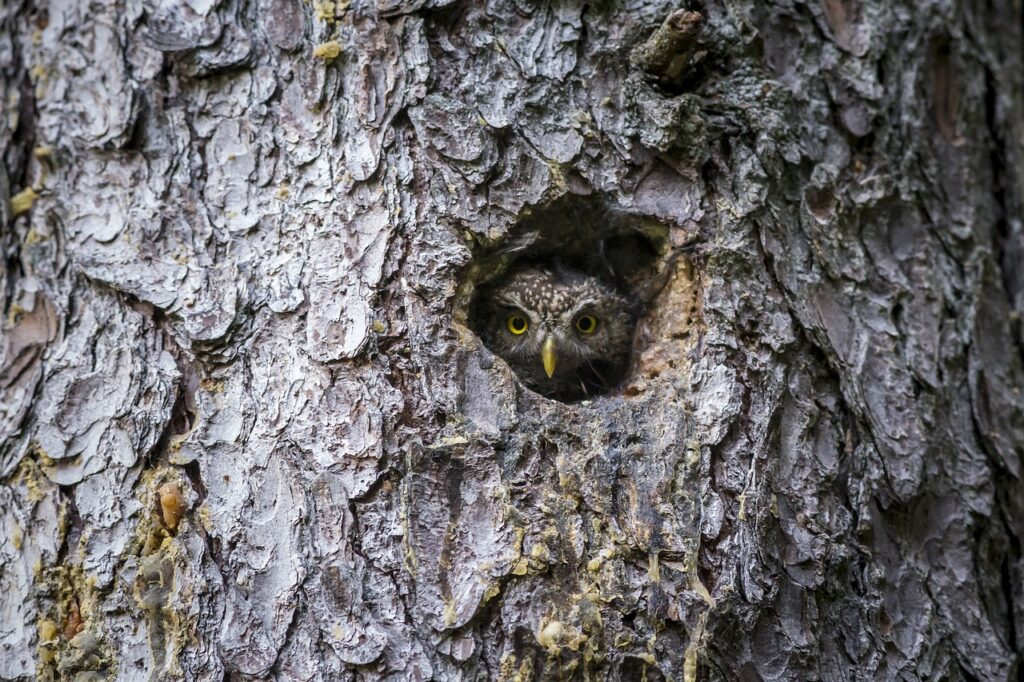
Why Grow a Woodpecker Habitat Garden?
Woodpeckers are known as “keystone species” and many other animals depend on them for survival. Creatures like screech owls, saw-whet owls, wood ducks, flying squirrels, bluebirds, wrens and other cavity-nesting birds use abandoned woodpecker holes for nests. But the benefits of woodpeckers go even further than that!
While many associate woodpeckers with tree destruction, most healthy trees can withstand the attentions of woodpeckers and woodpeckers may actually protect trees from insect damage. After all, woodpeckers are industrious insect eaters and studies have found that they eat up to 85% of emerald ash borers (and other insects) in infected trees! Woodpeckers are also handy for controlling garden pests and they’re fascinating to watch at bird feeders.
Today, woodpeckers are affected by habitat loss and deforestation and some woodpecker populations are declining as a result. But by creating woodpecker-safe gardens, we can help protect these amazing birds and safeguard their future. In return, woodpeckers will say “thanks” by helping to keep our gardens (and trees) pest-free!
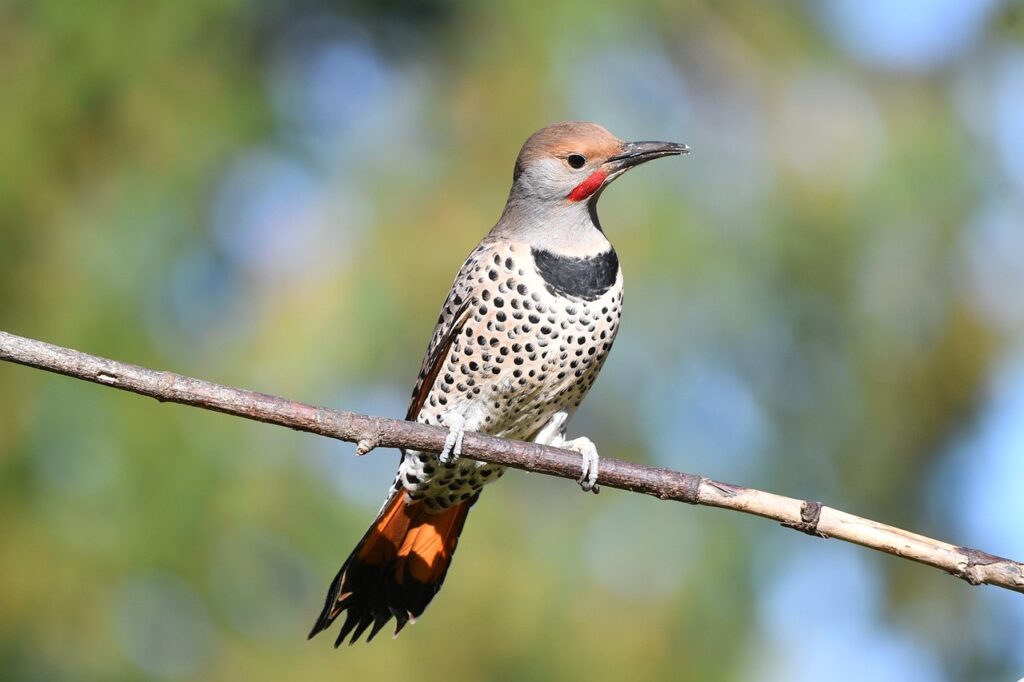
How to Attract Woodpeckers to Nest and Live
What attracts woodpeckers will vary from species to species, but the following tips will help you attract a wide variety of woodpeckers to your garden. Just make sure that your property is bird-safe before you start. That means: keep pets indoors when you can, install anti-collision stickers on large windows and don’t entice woodpeckers (or other wildlife) to gardens that are near busy roadways!
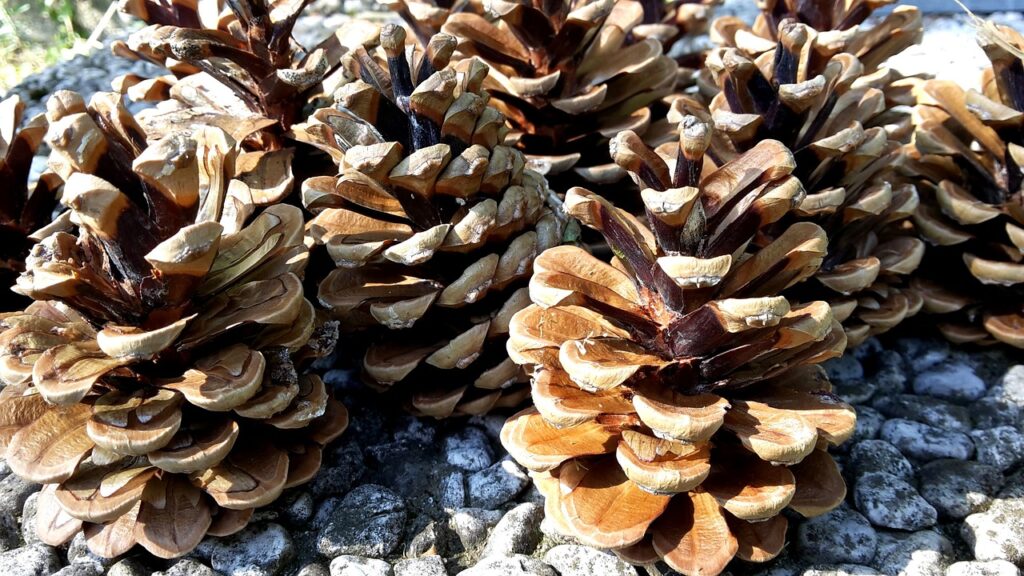
Grow native trees.
If you want to learn how to attract a woodpecker, the first thing you need to consider are trees! Woodpeckers feast on insects burrowed beneath tree bark, but they also use trees for nests. Plus, woodpecker diets vary throughout the year and many woodpeckers feed on berries in fall and nuts in winter when insects are scarce.
Both deciduous and coniferous trees appeal to woodpeckers, but the absolute best trees to grow are native species, like native oaks, native pine trees and beech trees. Pine nuts (from pinecones) and acorns (from oaks) will provide a steady source of food throughout the year. But for best results, try growing several trees together to create a mini thicket that’s extra cozy for birds in winter!
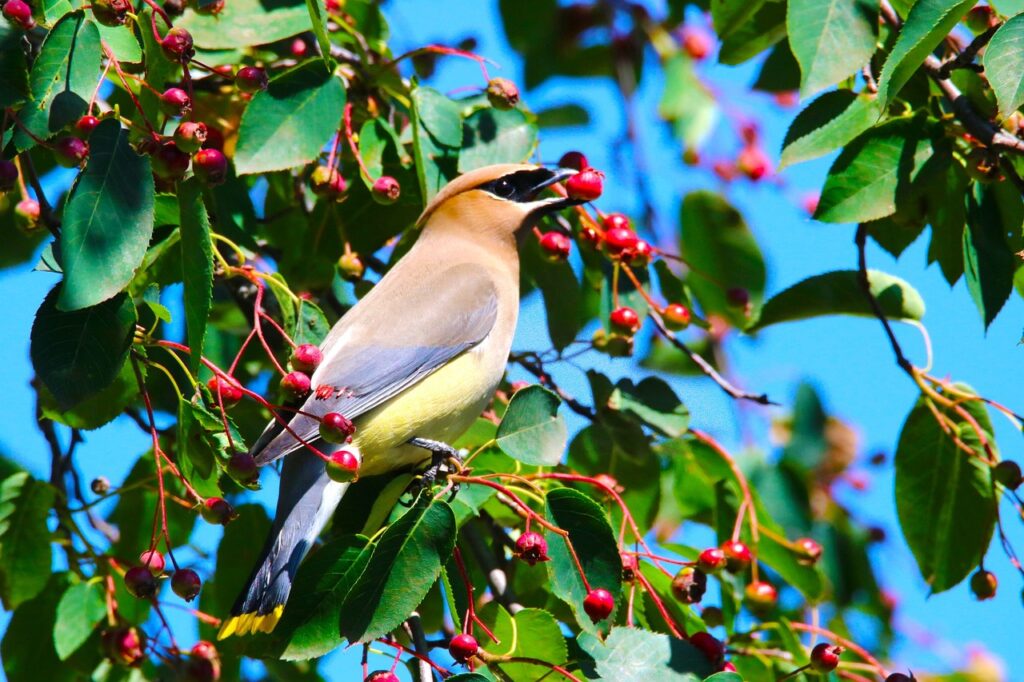
Add native plants.
Most people know that woodpeckers eat insects, but woodpeckers are omnivorous birds that also eat seeds, nuts and fruit at different times of the year. Growing native plants that bear seeds (like coneflowers and black-eyed Susan) and berry producing shrubs (such as serviceberries, elderberries and hollies) will make your garden more attractive to woodpeckers year round. After all, woodpeckers are non-migratory, resident birds that don’t fly south during the long winter months!
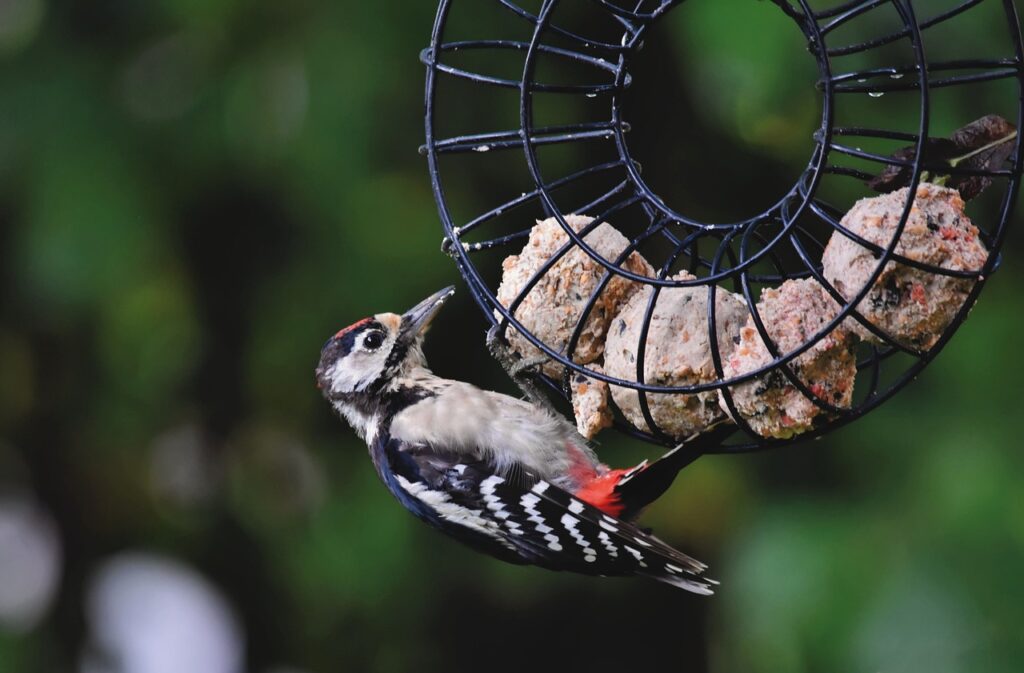
Hang feeders.
The best way to feed birds, like woodpeckers, is to grow plants that naturally attract them. But adding supplemental bird feeders can also make your garden more enticing for woodpeckers!
Suet cakes, black oil sunflower seeds and whole or shelled peanuts are woodpecker favorites, but woodpeckers will also enjoy peanut butter and mealworms. The best feeders for woodpeckers tend to be suet feeders and large platform or hopper feeders that are easy for woodpeckers to land on. Woodpeckers also drink nectar and jelly, which can be offered in oriole feeders or nectar feeders with large and sturdy perches.
Tip: To make woodpeckers feel more secure, install bird feeders near a tree trunk or line of trees. You can also make a DIY woodpecker feeder by smearing suet or peanut butter directly on tree bark!
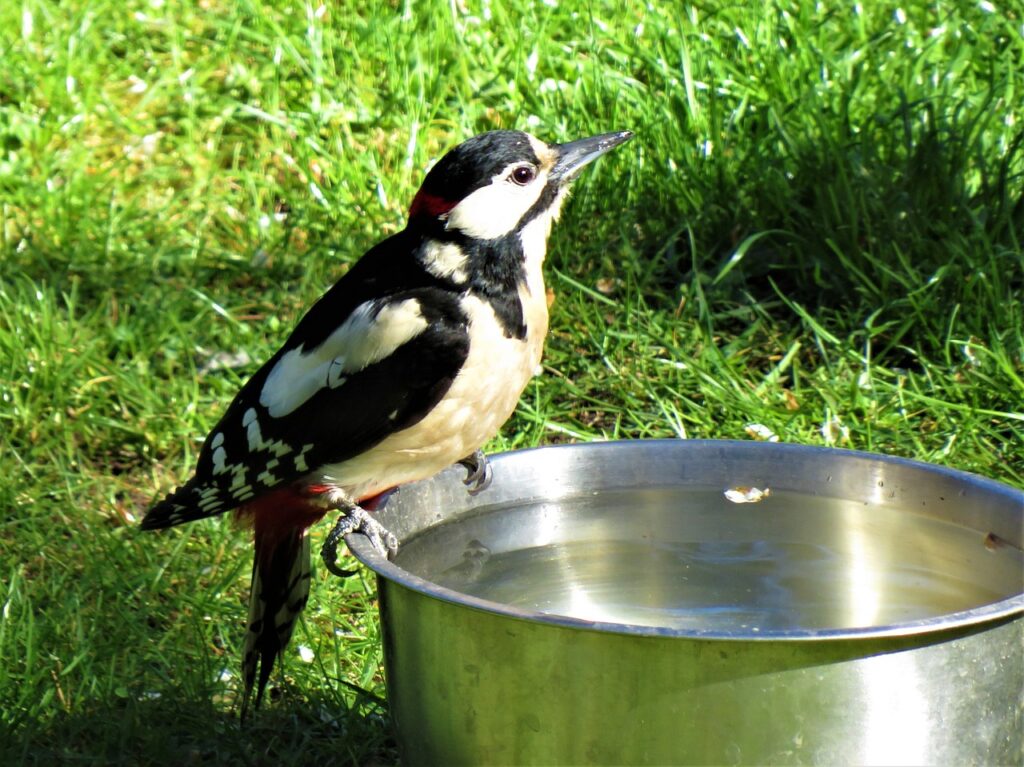
Install a bird bath.
Aside from food resources, woodpeckers also need a clean source of water to drink from. Shallow bird baths installed in a quiet section of your property will work well during the summer months, but heated bird baths are essentials during winter if you live in a cold climate!
For bird safety, make sure to clean out your bird baths regularly and skip using soap. You can also make bird baths more attractive to woodpeckers (and less attractive to mosquitoes!) by installing a solar-powered bubbler system.
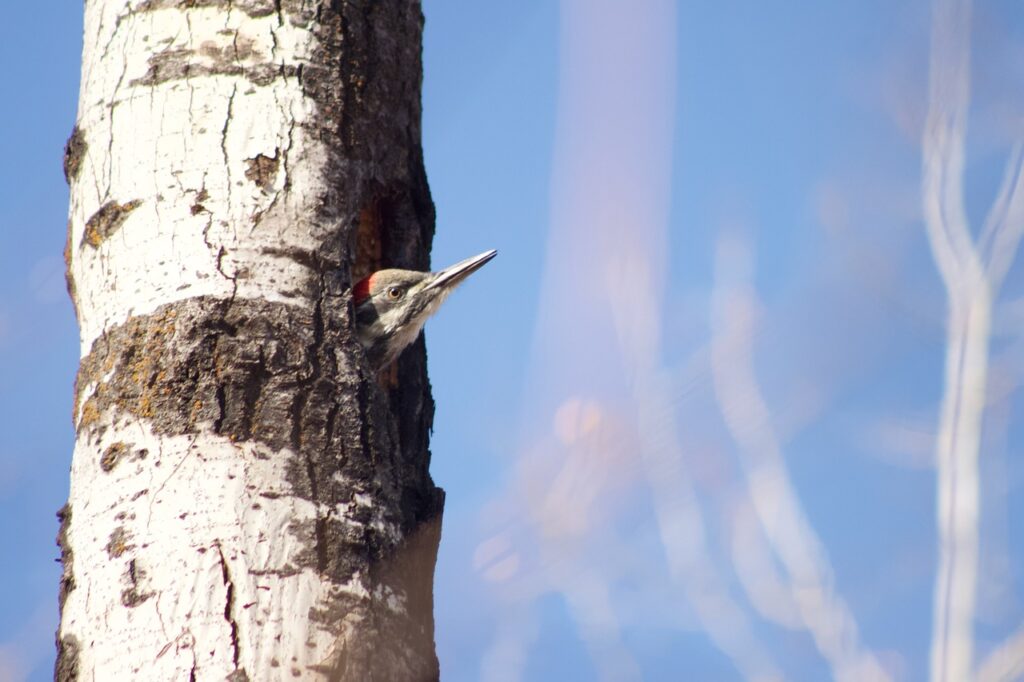
Leave tree snags and wood piles.
Many insects lay their eggs in old fallen wood and decaying trees and these areas can be hotspots of woodpecker activity. Keeping an outdoor woodpile or leaving old dead, “snag” trees on your property (if they don’t pose a fall hazard), can attract woodpeckers and provide natural nesting spots too!
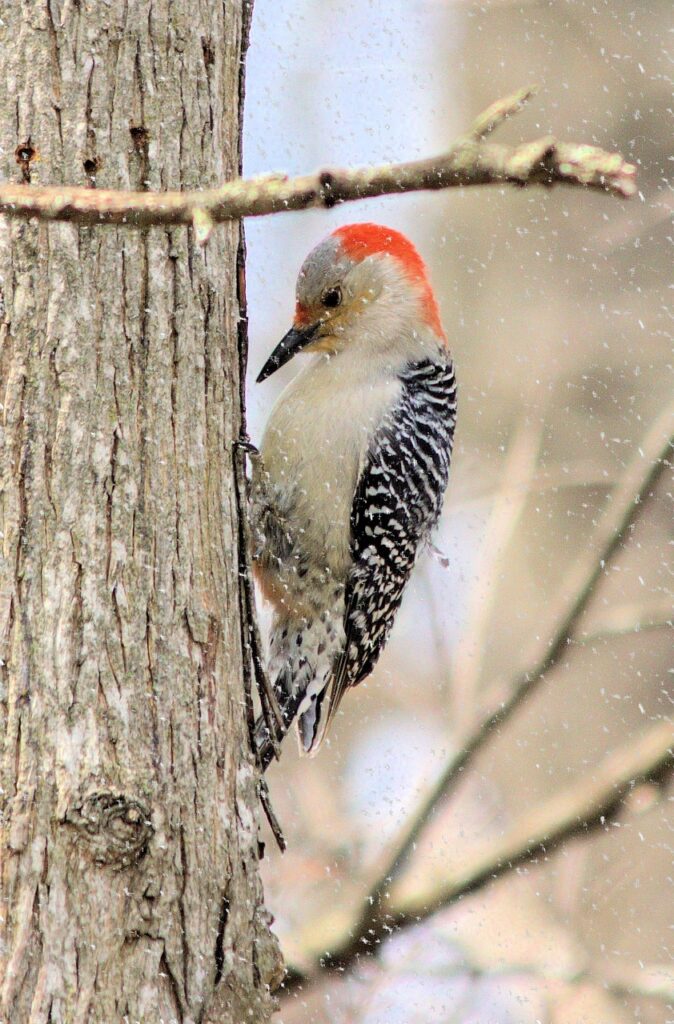
Make a woodpecker house.
While natural shelters like trees and snags are best for wildlife, if you don’t have room for trees on your property, you can also hang up a bird house for woodpeckers. Some woodpeckers, like pileated woodpeckers and yellow-bellied sapsuckers, generally won’t use bird houses, but smaller woodpecker varieties will use them for nesting and winter roosting as long as their entrance holes are appropriately sized. Hang woodpecker houses at least 10 to 20’ high and consider adding a baffle to deter raccoons and other predators.
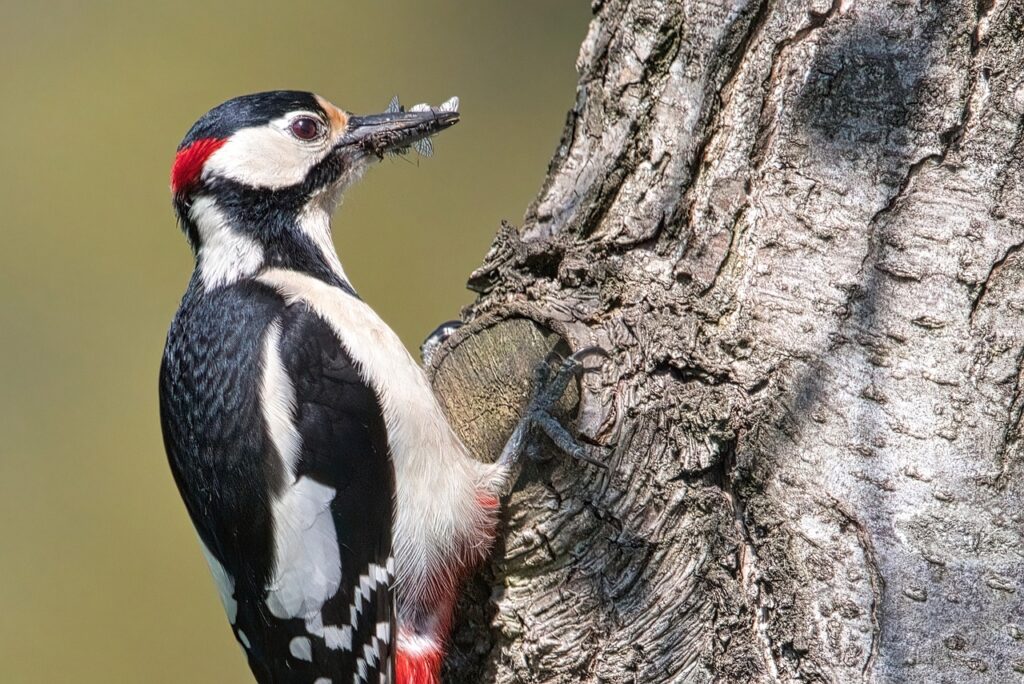
Go organic.
Woodpeckers will feast on a variety of common garden and tree insects, including beetles, grubs and ants. However, pesticides sprayed on insects can travel up the food chain and affect woodpeckers and other insect-eating birds. So it’s important to keep your garden as organic as possible if your goal is to attract wildlife!
Proper garden maintenance, crop rotation, installing floating row covers in spring and utilizing companion plants are all easy ways to reduce insects in your garden. However, if you do have a garden pest problem, opt for organic pesticides, like BT thuricide and organic insecticidal soap sprays. Also, never spray products on plant flowers where pollinators are likely to come in contact with them!
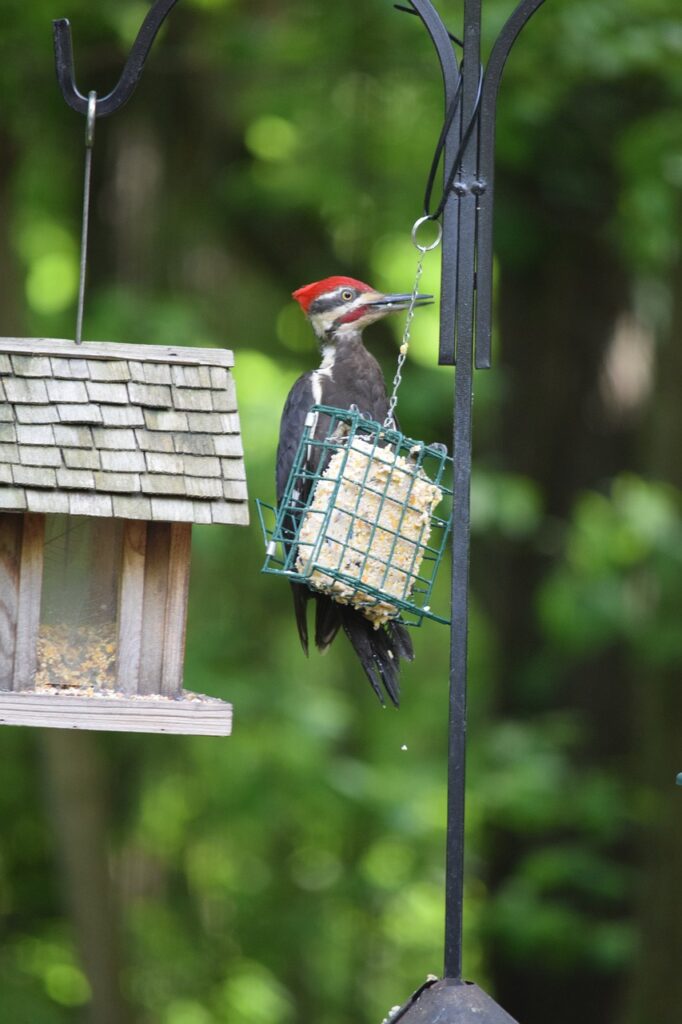
Frequently Asked Questions About Attracting Woodpeckers to Gardens
How to attract a pileated woodpecker?
Pileated woodpeckers are generally not that interested in bird houses, but there are other effective ways to create a pileated woodpecker habitat. Growing berry-producing plants like wild grapes, serviceberry and Virginia creeper, leaving snag trees in place and putting suet feeders outdoors will entice pileated woodpeckers to your property.
Should I let a woodpecker peck my tree?
Woodpeckers typically won’t do enough damage to healthy trees to cause them serious harm. However, if trees are riddled with pest insects, the combination of pest activity and woodpecker damage can cause trees to die. Rather than focusing on woodpeckers, it may be more useful to determine what pests are ailing your trees.
How do I stop woodpeckers from pecking my house?
Woodpeckers are generally a welcome sight in gardens; however, if lots of woodpeckers flock to your yard and they start paying too much attention to your house, you may want to deter them. Wire mesh installed over insect holes, reflective objects, spinners and windsocks can keep woodpeckers from pecking further. But if woodpeckers are interested in your house, you may want to investigate what’s drawing them in and determine if there are insects, like carpenter ants, at work.
